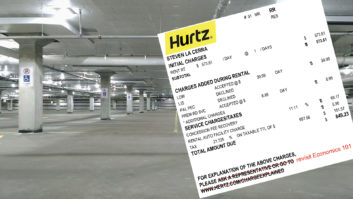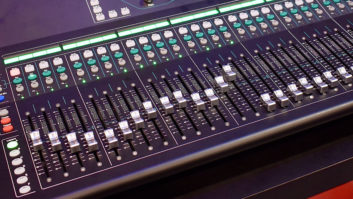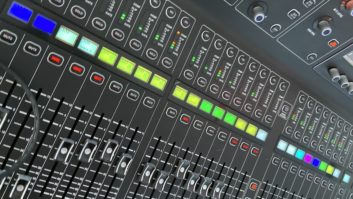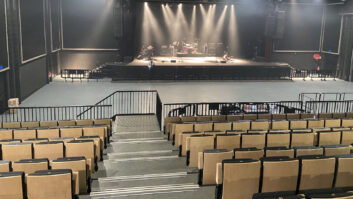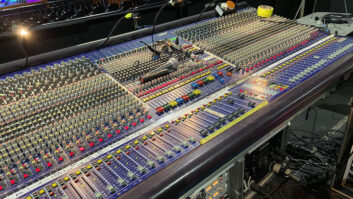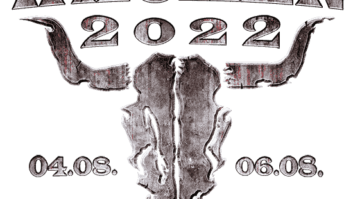My brain hurts. I just returned from visiting the folks at SSL’s New York office where SSL Support Engineer Andrew Hollis was kind enough to get me up to speed on the latest developments in SSL’s Live mixing system. I’ve had limited experience with SSL’s L300, but this was like SSL Live Boot Camp. Andrew poured so much information into my head that I think I burst a few brain cells. Or maybe it was the second-hand pot smoke I breathed in while walking behind that guy on 8th Avenue.
It’s mind-boggling what this desk can do and the elegant way in which it handles audio. SSL Live organizes audio into paths. A path can be an input, an output, a master, an aux send, a matrix or a “stem” (we’ll get to that in a minute), and a path can be stereo, LCR or mono. The L500 System supports 512 paths and has the hardware connectivity to route them to the moon, if you like. There’s MADI, Dante, SSL’s proprietary Blacklight II, AES/EBU and analog I/O, which should be enough to keep anyone busy. These audio connections can be made on the console itself, or via a variety of remote stage boxes.
There are a few things that differentiate SSL Live from other digital mixing systems, one of which is that all of these paths possess the same processing capabilities. An aux send has the same EQ, filters, comp, gate, inserts and channel delay as an input channel. The signal flow of one Path is completely independent from that of another, and get this—the processing order can be changed on screen in real time, without audio hiccups.
Appearing on every channel is a button labeled “Q” for Query. Press the Query button on a channel and you’ll instantly see that channel’s routing. For example, if you Query a VCA, its members are displayed (nothing new there) but if you Query, for example, a lead vocal channel, you will see the associated input, output, aux, VCA and stem assignments.
The most unique characteristic of SSL Live is a signal path known as a stem, a sort of hybrid between an input, a subgroup, a matrix and an aux send. Start by thinking of a stem as an aux with variable level from each channel, but unlike normal auxes, a stem can be fed directly to the L/R bus if need be. Here’s the kicker: the send point to the stem can be anywhere in the channel path, not just pre- or post-fader. If you want to send to the stem pre-fader but post-insert A (as opposed to insert B), you can do so.
The other thing that’s intriguing is that a stem can feed any bus, including other stems. Imagine you’re mixing monitors and have 15 drum channels, maybe with three kick channels (mic in, mic out and trigger). You can set up a Kick stem, then a Snare stem and a Toms stem. On the console you’ve now cleared the clutter of ten channels down to three stem faders. These stems all have full channel processing and routing capabilities so you can feed them to a (new) Drum stem. When you need to add drums to someone’s monitor mix, simply raise one Drum stem fader into that monitor mix. You could also create a Kick 2 stem with a lot of high end for that guy in the band whose HF hearing is shot—but the other band members can still receive a “normal” EQ on their Kick stem. Or create a Snare Verb stem, insert a reverb on that stem, and use it as a reverb return that can be routed anywhere. If you Query a stem, you will see all of the channels and auxes associated with that stem.
You’ll be reading more about this unique live mixing system, but right now my brain hurts. I’m gonna go watch some cartoons.

